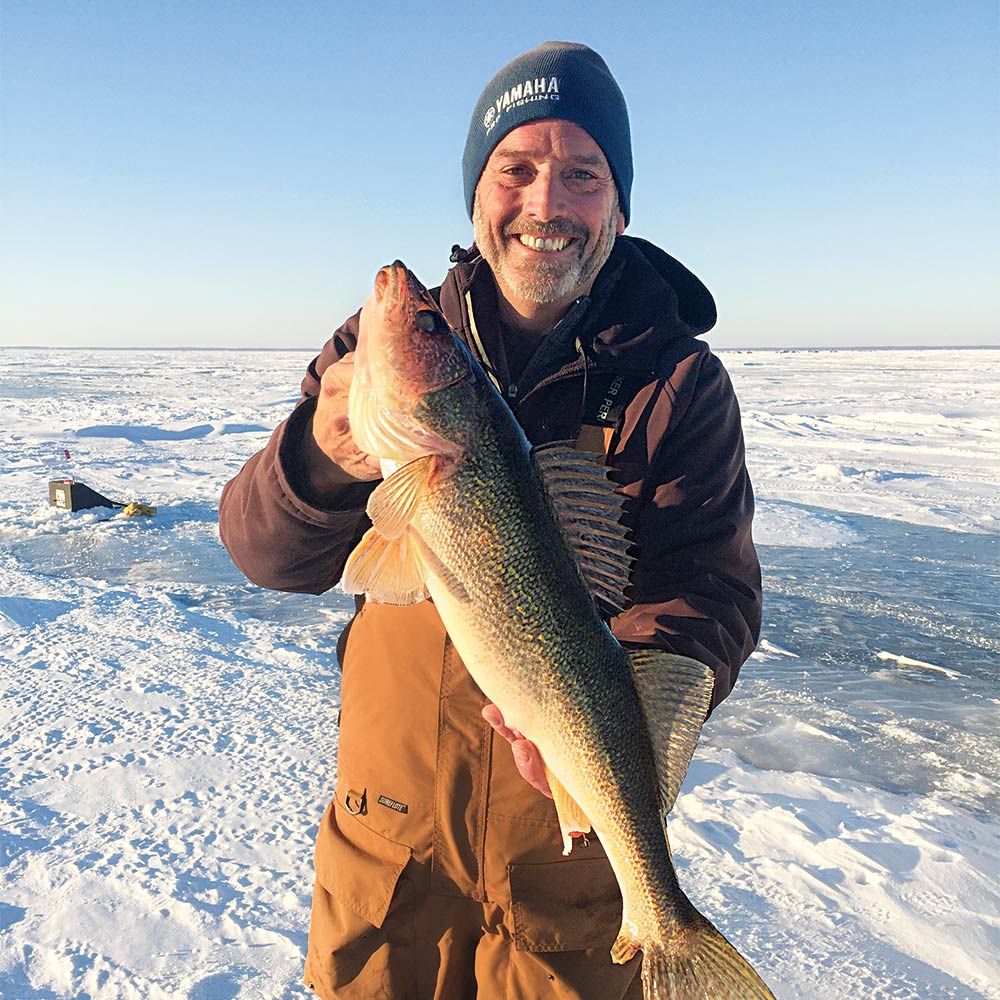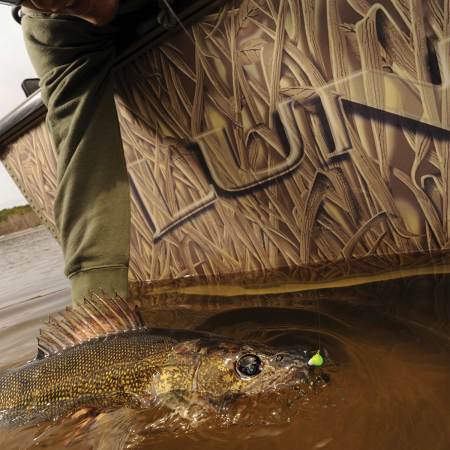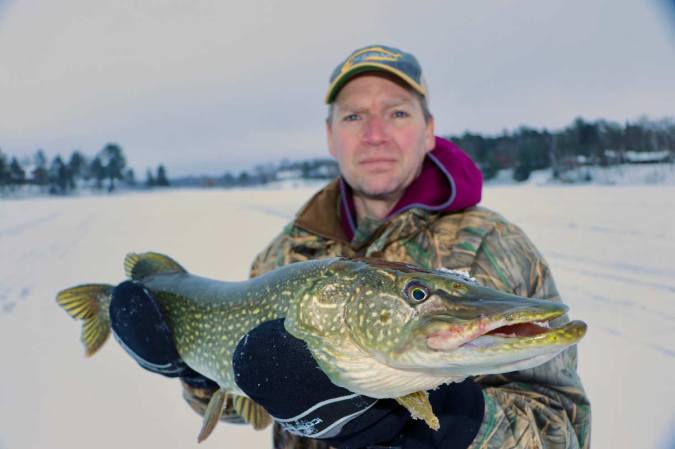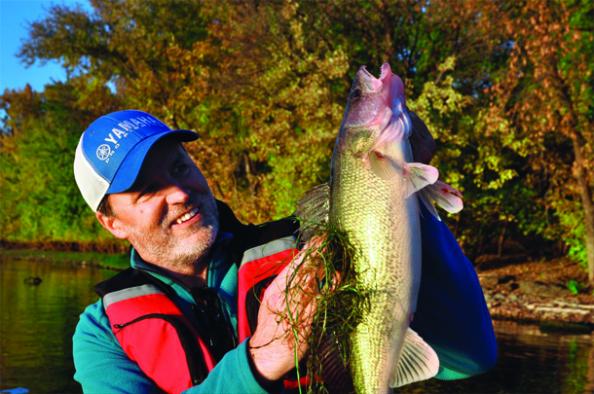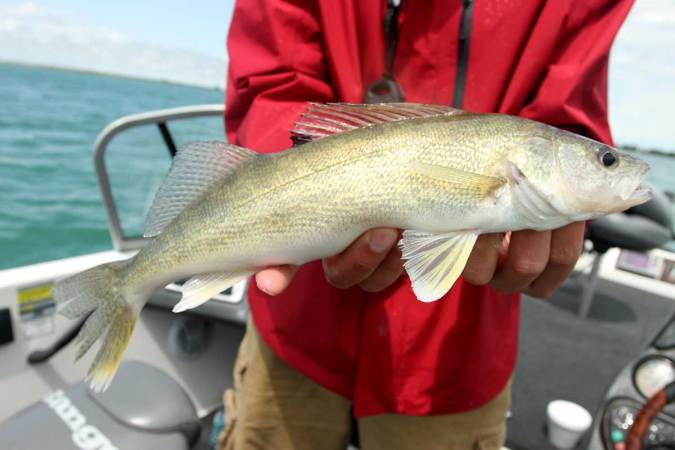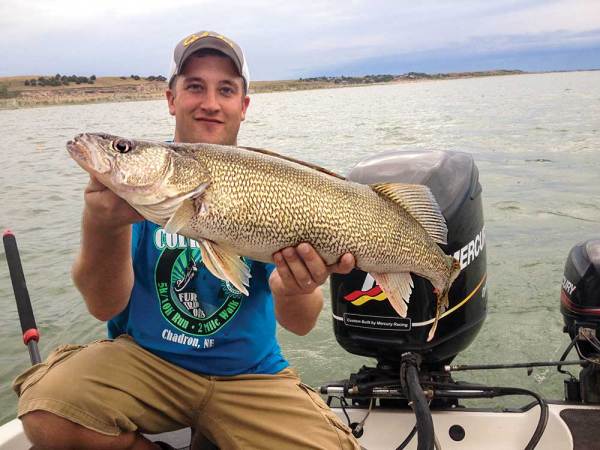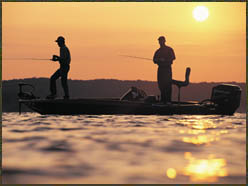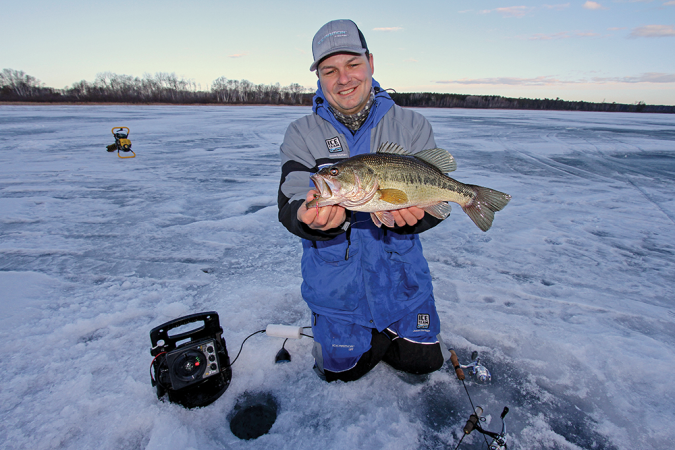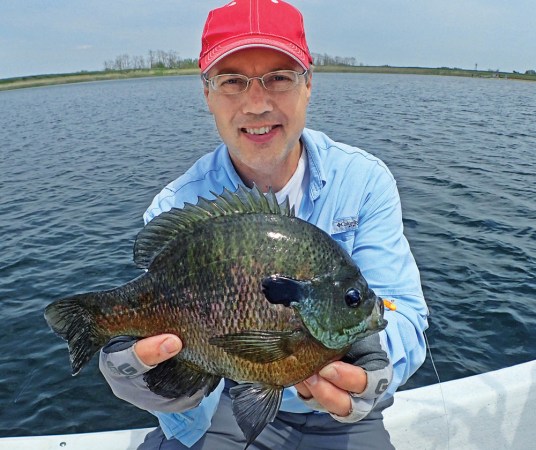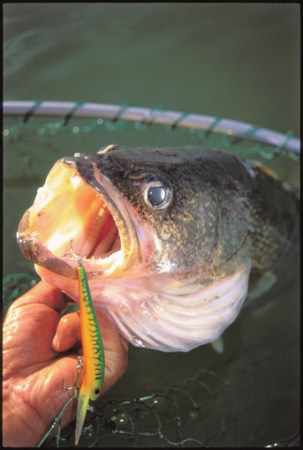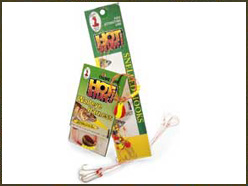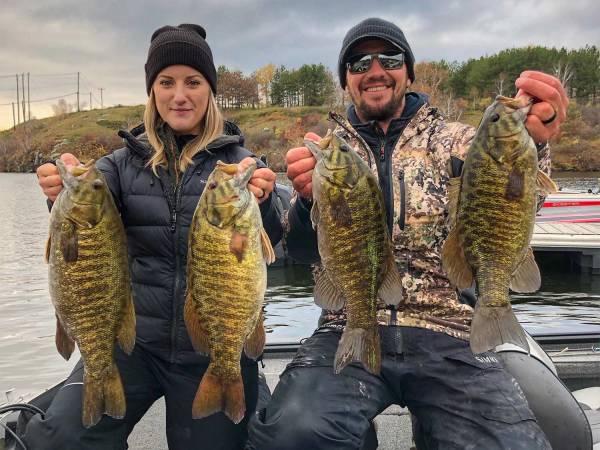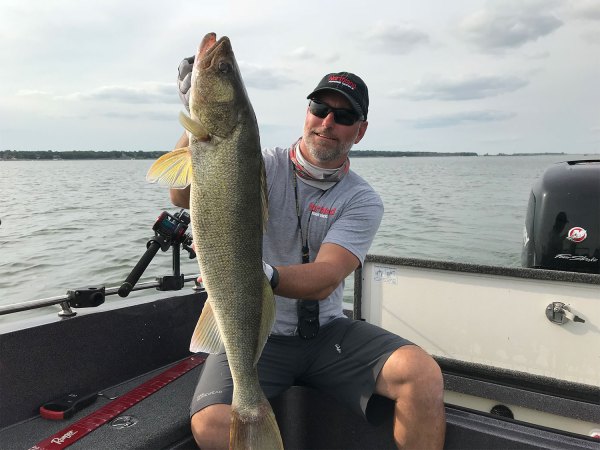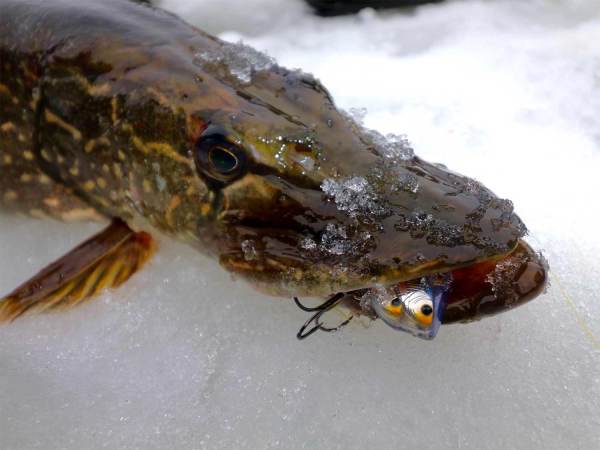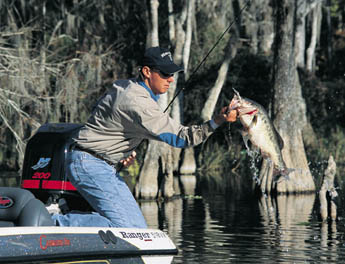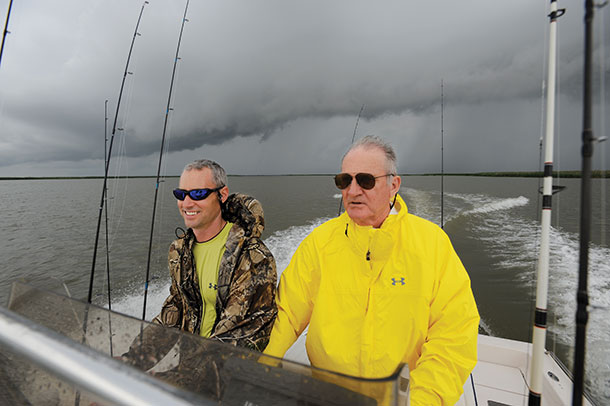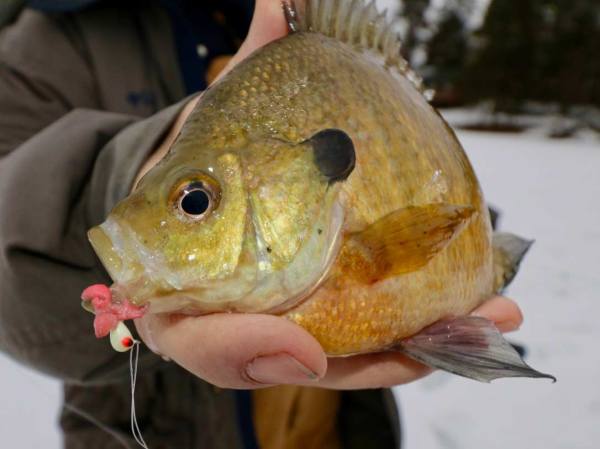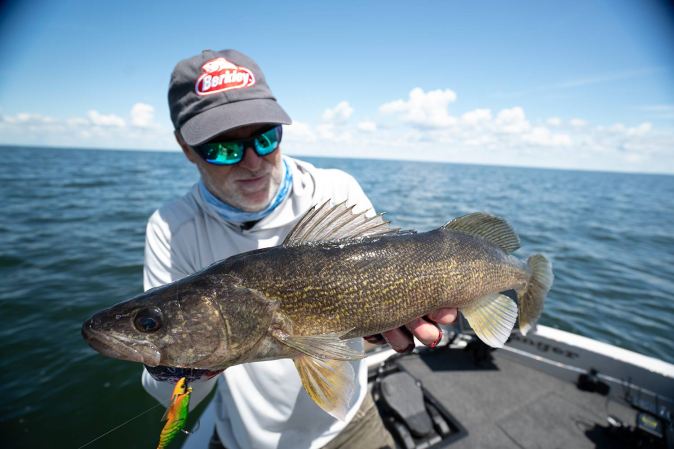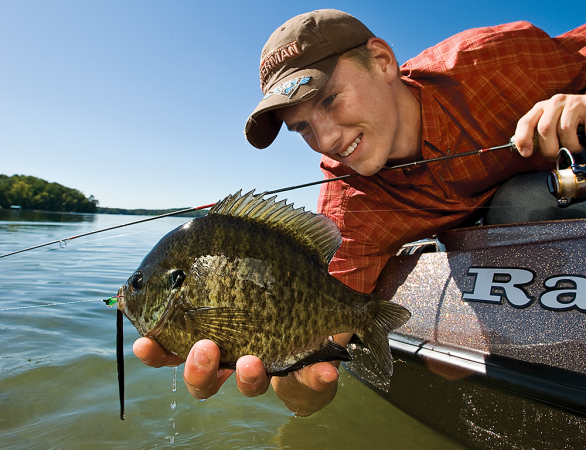The average high temperature in Minneapolis, Minn., in December is 23.7 degrees. Yes, that’s the high. Average lows are around 7.5. To most anglers in the U.S., this sounds like a special form of hell. This is when you wrap your hands around a hot toddy and organize tackle, biding time in a warm garage until more habitable temperatures arrive. Ask Ross Grothe, though, and the 49-year-old Minnesota resident and 26-year National Walleye Tour pro will tell you to put on your big-boy pants if you want to experience some of the best walleye fishing of the year.
“At first ice in early winter, fish will be feeding aggressively, getting ready for the really cold stuff,” Grothe says. “And when the really cold weather hits, you can find such incredible concentrations of walleyes in a small area that you may easily have the best day of your life. But, you have to get your butt on the water, or ice, for this to happen.” Here are the walleye pro’s three favorite tactics for loading the cooler in winter—though you really don’t need a cooler.
Walleyes in a Barrel
“Even though it gets crazy cold, some rivers have enough current to keep them from freezing,” Grothe explains. “The river fish are super easy to find at this time of year. Simply idle over the deepest holes until you mark a school on your electronics.” Grothe employs a Lowrance unit and keeps it on Downscan to pick up on fish holding tight to the bottom.
“Once you mark fish, start at the up-current section of the deep hole, and point the nose of your boat into the wind. You then need to turn on your trolling motor and maintain just enough power to keep your boat positioned vertically over the school. Once you do this, simply drop your bait on their nose and get the net.”
In this situation, Grothe most often employs a VMC Mooneye jighead tipped with a minnow. He will drop this combo to the bottom, then slowly lift his rod tip 3 to 6 inches off the bottom before slowly lowering the bait back to the river bottom.
“Your most aggressive fish will position themselves on the up-current edge of the hole. Watch your graph closely. You should be able to see your jig fall to the fish arches, and oftentimes you’ll watch them bite.”
Grothe believes the best time to hit the river is when the days are shortest. “I remember a January day fishing the Mississippi River out of Redwing, Minn., when we caught 60 walleyes up to 7 pounds. It’s so effective, it’s almost cheating. Like shooting walleyes in a barrel.”
Getting Tipsy
Although liquor is certainly a big part of icefishing for many, when Grothe talks of getting “tipsy,” he’s referring to the old-school tip-up method of fishing through hard water. The technique is nothing new, but the way the walleye pro employs this method is revolutionary.
“To me, using tip-ups is icefishing’s version of power fishing for the bass guys. It’s a way for me to cover a lot of water when I’m fishing an unfamiliar lake, or if I’m not really sure where fish are positioned on a really large piece of structure.”
To start, Grothe grabs a GPS loaded with a Navionics lake map. While in a vehicle, either his truck or an ATV, he will drive while following the contour of a point or a specific breakline. Or, he may drive his vehicle around the edge of a big flat. “Now, my tire tracks give me a visual reference to the structure I will be fishing. Instead of having to drill a million holes to check the depth, I simply drill inside my tire tracks.”
Since Minnesota allows two lines per angler during icefishing season, Grothe’s family of four can put out eight lines along two different depth changes to very quickly identify how the fish are using that particular piece of structure.
“Once we get a couple of bites, I simply look at my map and identify similar areas. There may be no faster way to find walleyes through the ice.” Grothe uses a single Kahle-style hook with a split shot 18 inches above a live minnow for the majority of his tip-up fishing.
Read Next: How to Find Late-Winter Walleyes
Jig and Bob
If you aren’t one to sit idly by while waiting for a flag to tip you off to a bite, Grothe has just the tactic for you. “I have had some of my best days ever fishing through the ice with a jigging spoon and bobber chaser. This is the perfect setup if you are targeting a small piece of structure, like a rock pile.”
Grothe drills two holes only a foot apart. He jigs a VMC Pro Series Rattle Spoon in one hole and fishes a nose-hooked minnow beneath a bobber in the other.
Just how effective is this one-two punch? “I’ve had a 70-fish day jigging on Mille Lacs, with several 10-pounders in the mix. So, I’d say it’s pretty damn effective.”
